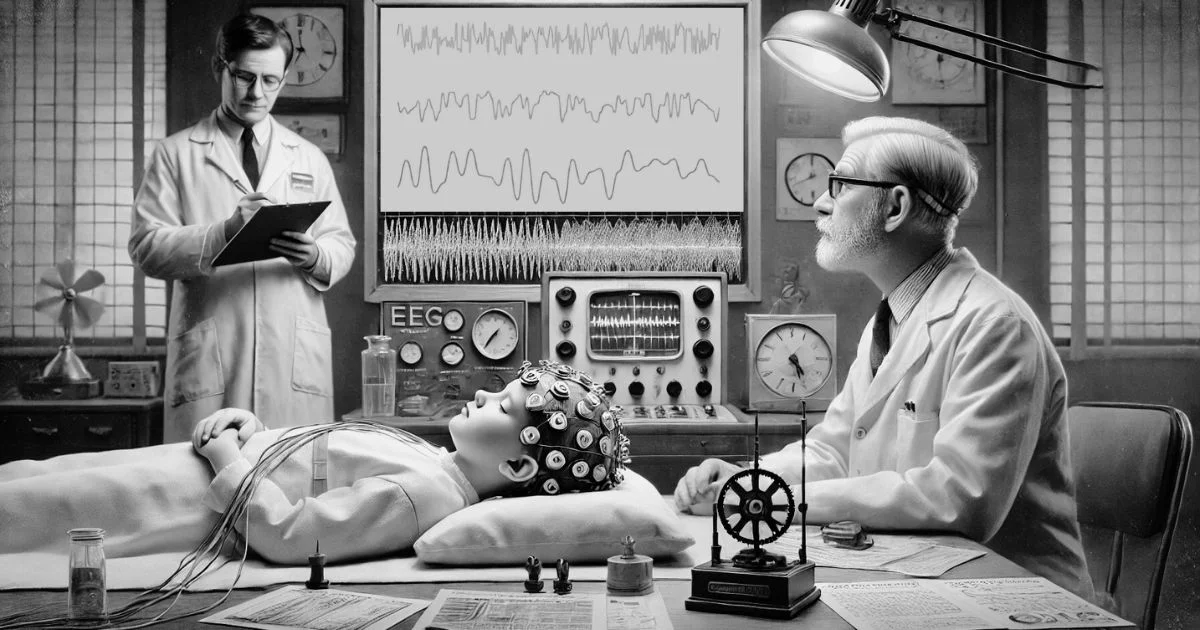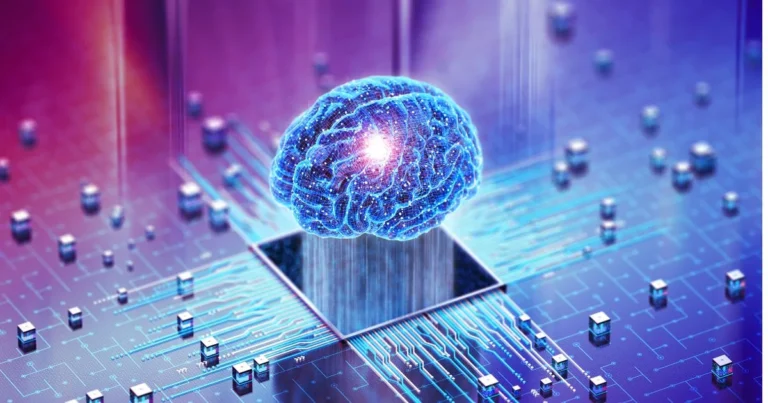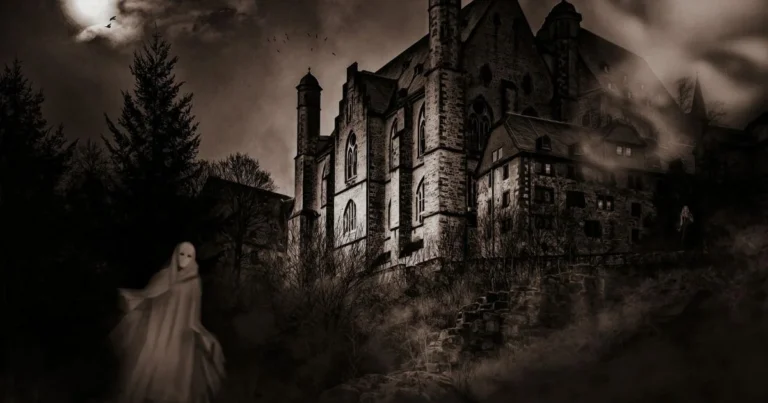Ester Kleitman: The girl who illuminated the science of sleep
In the dim light of a Chicago laboratory, a young girl was sleeping peacefully. Her name was Ester Kleitman, and although she had no idea, she was about to help her father make one of the most significant discoveries in the science of sleep. Her father, Nathaniel Kleitman, was a passionate scientist driven by a simple yet profound question: What happens in our brains when we sleep? In the 1950s, most people believed that sleep was a uniform state, just a kind of “pause” for the brain. However, Kleitman suspected there was more to it. He sensed that sleep held deeper secrets.
At around nine years old, Ester sometimes served as her father’s experimental subject. Unlike adults, who found it odd to sleep under a researcher’s watchful eye, she found it fun to be hooked up to machines as she drifted off, like a little astronaut exploring an unknown world. That night, as her eyelids grew heavy, her father and his student, Eugene Aserinsky, placed delicate electrodes on her head to record her brain activity. The lab was silent, broken only by the crackling of the machines and the child’s steady breathing.
Then, something strange happened. Although Ester appeared to be in a deep sleep, her eyes suddenly began moving rapidly beneath her closed lids. Aserinsky, who was watching the recording, frowned. The encephalogram did not show signs of rest but rather intense brain activity, almost as though the child were awake. Leaning over the machine, Nathaniel Kleitman observed the frenetic lines printing onto the paper. This was not what they had expected. Was it a malfunction? They checked their connections and found nothing amiss. Ester was still fast asleep. Thanks to this dozing little girl under her father’s machines, the field of sleep science had just crossed an invisible threshold. It was now clear that sleep was not simply a break from wakefulness, it was a complex state where the brain remained active.
Ester’s experience under the machines was far from a body at rest; it was a brain in full swing, generating worlds, integrating memories, and regulating emotions. As they repeated the experiment on other subjects, they discovered that these phases of rapid eye movement (REM) occurred regularly throughout the night, accompanied by intense brain activity. Kleitman and Aserinsky had just identified paradoxical sleep, a critical phase of the sleep cycle during which our most vivid dreams take place. Their findings, reflected in those electrical signals, revolutionized our understanding of sleep and dreaming.
In truth, sleep conceals a fascinating and complex neural landscape. For a long time, it was seen as a passive state, merely the brain’s retreat into the shadows of consciousness. Nevertheless, discoveries in the twentieth century changed that view.
Behind the lid: unveiling the secret world of Rem sleep
When we sleep, our eyes dart beneath our closed lids, making abrupt movements long associated with dreams. What do these rapid eye movements (REM) really reveal? Do they faithfully track our wandering gaze in a dream world, or are they merely random spasms of the sleeping brain? This question, which has fascinated neuroscientists for decades, has recently found a compelling answer through research by Yuta Senzai and Massimo Scanziani at the University of California, San Francisco.
To solve this mystery, the researchers observed the neuronal activity of a small brain region composed of a network of cells that, when an animal is awake, encodes its orientation in space in real time. Think of it as an internal GPS, continuously tracking your movements and pinpointing where you look and how you navigate. It turns out this system doesn’t shut down when the animal falls asleep. It keeps plotting invisible trajectories, as though the brain were continuing an inner navigation, independent of the outside world.
In their experiment, the team recorded this brain activity in mice while tracking their eye movements with tiny head-mounted cameras. Their findings are surprising: these rapid eye movements are not random but correspond closely to virtual shifts of gaze in the mental space of a dream. Each saccade appears to reflect an inner rotation, a shift from one imaginary landscape to another. It’s as though, behind closed eyelids, we wander through a universe constructed by our brain, scanning a horizon visible only to our unconscious.
These results challenge our understanding of paradoxical sleep. They suggest that our brain does not simply drift into a passive reverie; it actively simulates experiences, testing scenarios, refining memories, and exploring alternative worlds. If these eye movements represent a form of internal navigation, our dreams may be far more structured and coherent than once believed. This mechanism could explain why some dreams feel so immersive and realistic, as if we were truly living them.
Scenes of the sleeping mind: Imagery and emotion in dreams
What we now call paradoxical sleep is the primary cradle of dreams. It entails the activation of several brain structures, each playing a distinct role in the dream experience. The associative visual cortex, despite closed eyes, becomes active to generate the imagery of our dreams. The brainstem, especially the reticular formation, regulates sleep-wake cycles and inhibits muscle movements to prevent us from physically acting out our dreams. Meanwhile, the limbic cortex, including structures such as the amygdala and hippocampus, processes emotions and memories, lending dreams their often dramatic emotional tone. In contrast, the frontal regions, essential for logic, planning, and critical reasoning, are relatively less active during paradoxical sleep. This dip in activity may explain why our dreams often appear illogical, chaotic, or even absurd. Without the usual cognitive oversight, the brain allows more spontaneous associations, weaving memories and emotions together in a fluid, intuitive way. This partial disengagement of the frontal lobes may also play a role in nocturnal creativity, allowing new connections to emerge between seemingly unrelated ideas, fostering problem-solving and innovation. Thus, rocked by the electrical oscillations of paradoxical sleep, Ester’s brain could have been honing concepts, linking apparently unrelated ideas, and opening the door to fresh perspectives.
This discovery radically changed our view of sleep. Far from a mere pause in our existence, sleep is an active process of memory consolidation and emotional regulation. Neuroimaging studies have shown that connections between the amygdala, an emotional center, and the prefrontal cortex are strengthened during paradoxical sleep. This interaction plays a crucial role in regulating emotions and managing emotionally charged memories. In other words, paradoxical sleep appears to allow the brain to sort, evaluate, and restructure memories based on their emotional weight, contributing to psychological adaptation and resilience in the face of stress. This could explain why restorative sleep helps us cope better with anxiety and trauma, whereas disrupted sleep is often linked to emotional disorders such as depression or post-traumatic stress. Rather than being nothing more than a nighttime theater of illusions, dreaming may be vital for emotional balance and the consolidation of affective learning.
Over time, the connection between sleep and cognitive processes has emerged as a cornerstone in our understanding of the human brain. The discovery of paradoxical sleep showed that our mental activity never fully shuts down; instead, it reorganizes throughout the night, offering a glimpse into deep mechanisms of learning and emotional adaptation.
Ester herself only grasped the significance of all this much later. As a child, she simply remembered those nights spent drifting off beneath wires and sensors, waking to find her father looking at her with both love and scientific excitement. Her slumber under those machines was not just a scientific curiosity, it was a cognitive revolution, a decisive step forward in understanding the mysterious world that awaits us each night.
What Kleitman and Aserinsky discovered led to a deeper appreciation of the function of paradoxical sleep and its role in memory, emotion, and creativity. Today, this sleep phase is regarded as essential not only for processing memories but also for our mental and cognitive well-being. The findings sparked by their research paved the way for fundamental studies on sleep disorders, neurodegenerative diseases, and even the impact of sleep on learning.
Thus, what began as a simple scientific curiosity in a Chicago laboratory became a central pillar of modern neuroscience. The story of a dozing Ester Kleitman, connected to her father’s machines, reminds us that behind every major scientific breakthrough lies a moment of awakening, an observation that challenges our certainties and compels us to push the boundaries of our understanding of the human brain.
References
Aserinsky, E., & Kleitman, N. (1953). Regularly occurring periods of eye motility, and concomitant phenomena, during sleep. Science, 118(3062), 273-274.
Hobson, J. A., & McCarley, R. W. (1977). The brain as a dream state generator: An activation-synthesis hypothesis of the dream process. American Journal of Psychiatry, 134(12), 1335-1348.
Senzai, Y., & Scanziani, M. (2022). A cognitive process occurring during sleep revealed by rapid eye movements. Science, 377(6609), 999–1004.
Stickgold, R., & Walker, M. P. (2013). Sleep-dependent memory triage: Evolving generalization through selective processing. Nature Neuroscience, 16(2), 139-145.
Walker, M. P., & van der Helm, E. (2009). Overnight therapy? The role of sleep in emotional brain processing. Psychological Bulletin, 135(5), 731-748.

Sara Lakehayli
PhD, Clinical Neuroscience & Mental Health
Associate member of the Laboratory for Nervous System Diseases, Neurosensory Disorders, and Disability, Faculty of Medicine and Pharmacy of Casablanca
Professor, Higher School of Psychology







